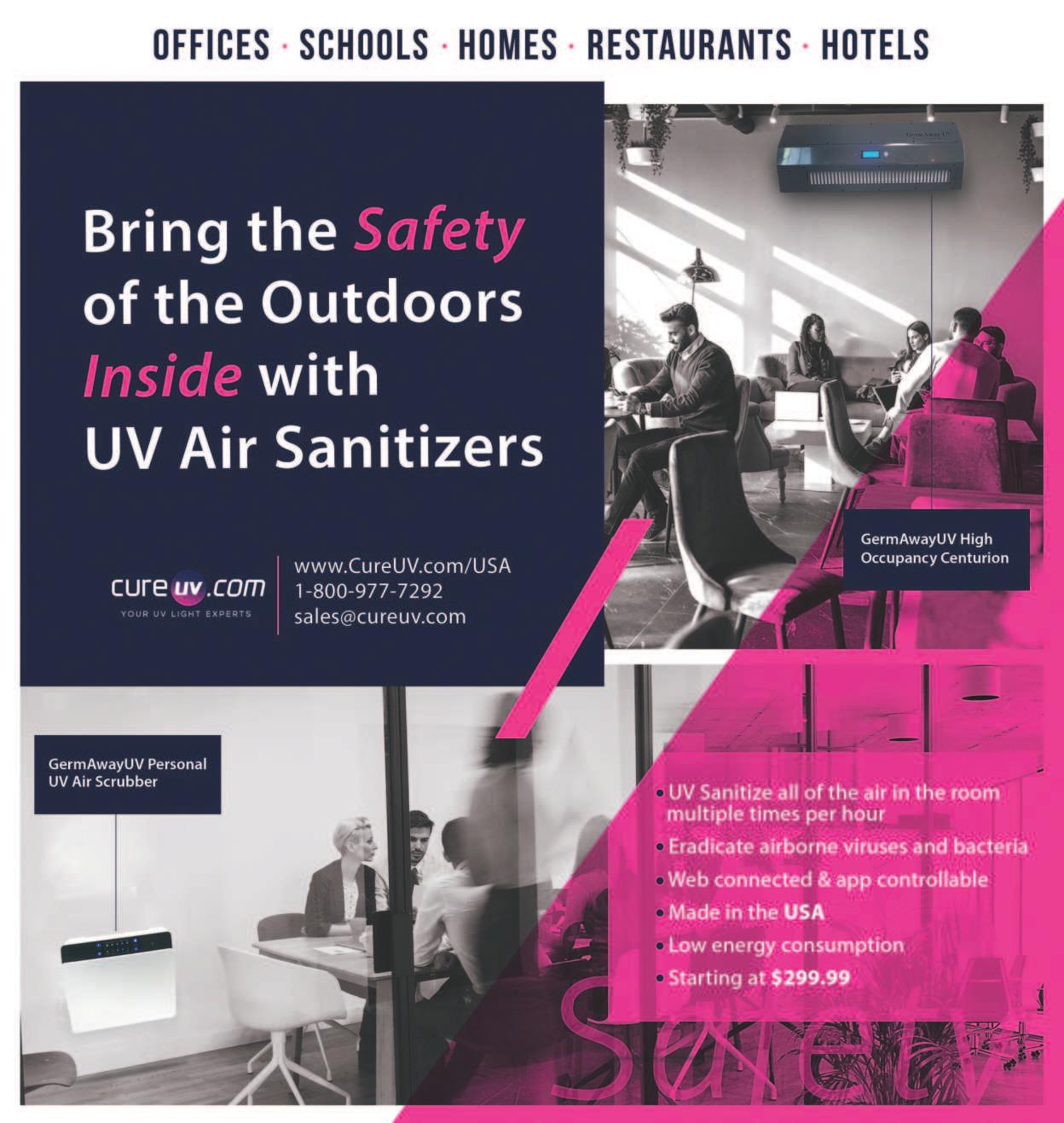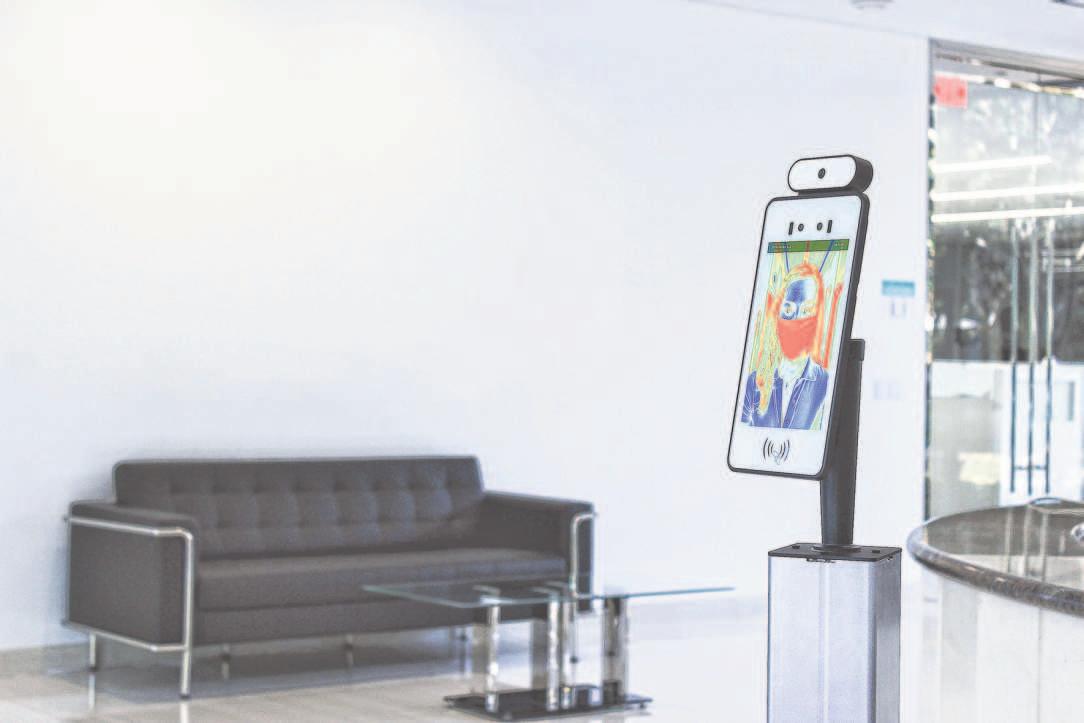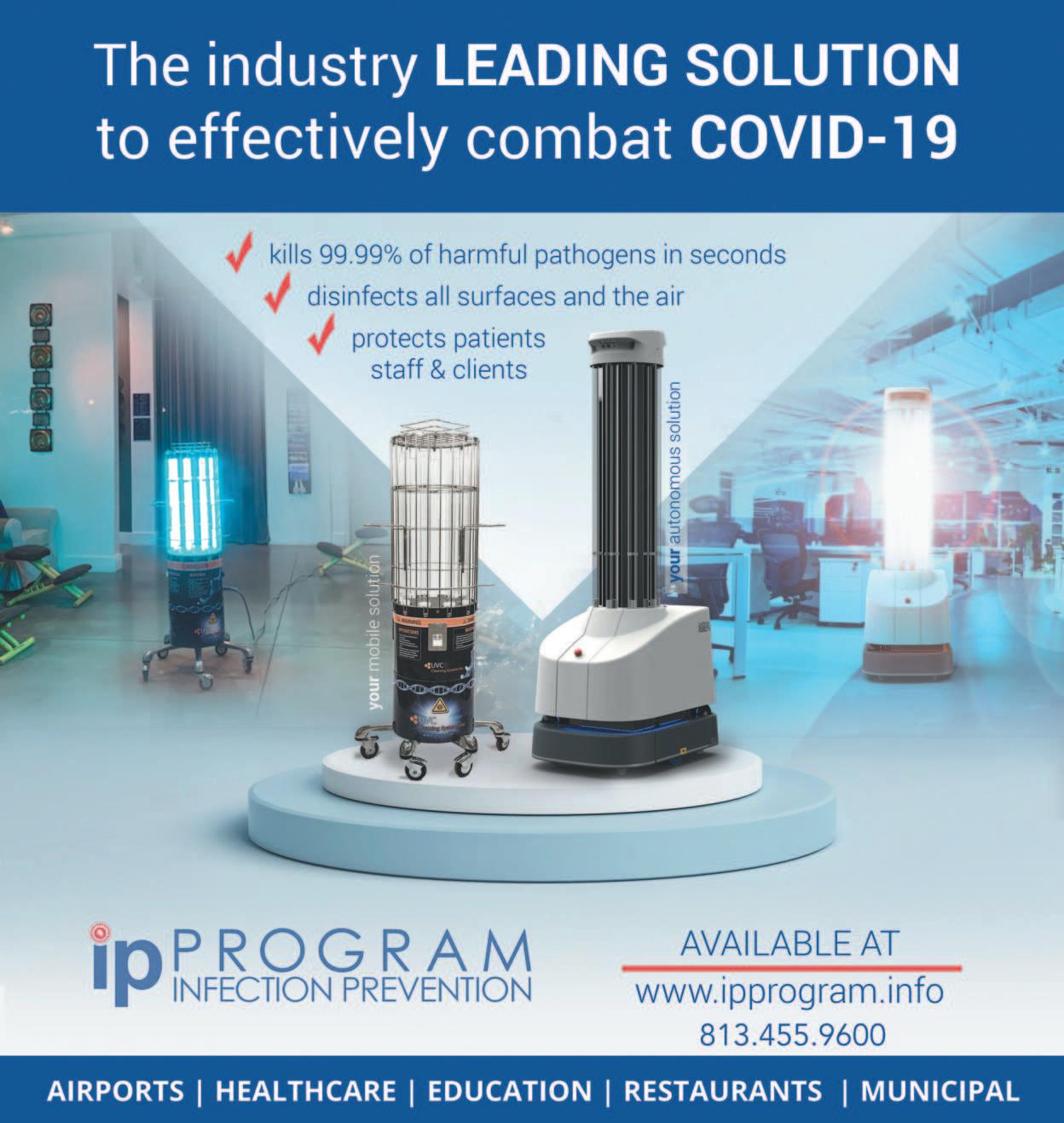
5 minute read
REOPENING TOOLS
PRODUCTS
USATODAYSPECIALEDITION
Advertisement
Tools for Reopening
Businesses are adding procedures and devices to boost safety
By Sandy Smith
“It’s very expensive to do that, but I felt that was worth
SINCE HIS EIGHT it,” Bruell says. “In my mind, RESTAURANTS if you’re committed to moving reopened last May, forward, it was just the cost of Cleveland chef doing business.” and restaurateur The range of busiZack Bruell has nesses incurring or grown accustomed considering such to doing things additional costs to differently. The maintain operations tables are no longer is broad, from those set in advance, and reopening off ice staff members wear space to those that masks and sanitize heavily rely on foot every time they traff ic. At each turn serve a table. They are a variety of tools no longer line plates that companies can up on their arms, deploy to deliver a instead carrying one safe environment. in each hand. But it can be
Those new Chef Zack Bruell confusing to know approaches were where to invest. joined by tools like “A cottage contactless thermometers for industry has grown up around reading guests’ temperatures COVID,” says Dr. James and, in two of the locations, Merlino , chief clinical transforionizers to scrub the air. mation off icer at the Cleveland Clinic and lead for the clinic’s AtWork initiative , which helps employers develop and implement plans to reopen safely. Cleveland Clinic also offers nine industry-specific safety guides on its website . Merlino says the “simple tactics” remain the most important: wearing a mask, washing hands, social distancing, educating about symptoms and staying home if you are sick. That aligns with guidance from the American Industrial Hygiene Association (AIHA) , which provides similar guidelines on the Back to Work Safely website it sponsors. For companies that want to improve safety for their employees, clients and customers, there are a variety of tools worth considering. TEMPERATURE CHECKS Merlino recommends the
CONTINUED
ZACK BRUELL RESTAURANT GROUP; GETTY IMAGES
USATODAYSPECIALEDITION

USATODAYSPECIALEDITION
PRODUCTS



SpinTouch’s RapidScreen can detect body temperature using a contactless forehead scan.
SPINTOUCH LAMASATECH The Zentron kiosk is multifunctional.
use of contactless thermometers by all businesses and workplaces. “It’s controversial whether it’s truly necessary, but it does cause people to pause. I think it provides a certain level of security to stop and think about what’s going on,” he says.
Contactless devices start well below $100 and are widely available from manufacturers like Braun and HoMedics . But the Food and Drug Administration cautioned last summer that these devices can miss up to half of those infected with COVID-19 because not everyone infected has an elevated temperature.
Bruell has an employee stationed at the entrance of each restaurant to take diners’ temperatures. “It has slowed the pace of the dining experience because you have to have extra people at the front door to take the temperature and explain what you’re doing,” he admits.
Stand-alone kiosks like SpinTouch’s RapidScreen detect body temperature simply by scanning the forehead. Some of these tools, like Zentron from LamasaTech , can also print visitor badges, have built-in radio-frequency identifi cation (RFID) readers for use with key cards or fobs, and can even determine whether the person entering is wearing a mask. CONTACT TRACING
An app or wearable device can help determine who might have come in contact with an infected employee or guest.
SaferMe off ers both types of tools to clients that include the government of New Zealand, sports organizations, schools and businesses. The devices can be used preemptively and post-exposure, says CEO Clint Van Marrewijk . “Sometimes a symptom is reported, but there is a delay in waiting for test results. During that 24- to 48-hour period, we can take precautions to determine who is most at risk and who needs to get tested.”
SaferMe uses Bluetooth technology to determine contact with infected people,
CONTINUED
USATODAYSPECIALEDITION

PRODUCTS
USATODAYSPECIALEDITION

SAFERME SaferMe offers Bluetooth-enabled contact tracing in wearable and app forms.
GETTY IMAGES The Centers for Disease Control and Prevention recommends using tools like HEPA filters to improve indoor air quality.

FRESH-AIRE UV Fresh-Aire UV says its products use ultraviolet light to kill up to 99.99 percent of coronavirus particles within two seconds of exposure.
and the service starts at $60 annually per employee. “A lot of our clients do temperature screenings and a daily health check,” Van Marrewijk says. “It allows someone to assess their own health and make the decision that coming to work is a good idea before they come into the off ice and cough.” AIR CLEANING
The Centers for Disease Control and Prevention (CDC) recommends that businesses work with an HVAC professional to increase the percentage of fresh air and total airflow to occupied spaces and improve central air fi ltration.
The CDC also recommends using tools like HEPA filters and ultraviolet germicidal irradiation. Commercial and industrial air purifi ers from companies like Industrial Maid have adapted to include fi ltration for the coronavirus. These types of systems can neutralize more than 99 percent of virus particles in 30 minutes. They also work on other bacteria and viruses, extending their use well beyond the current pandemic.
Fresh-Aire UV makes models specifi cally for health care, education, off ice and other settings that it says kill 99.99 percent of coronavirus particles within two seconds of exposure. ESSENTIAL — OR OVERKILL?
There is a range of opinions as to whether these tools are necessary, particularly for small businesses already struggling fi nancially. In fact, Cleveland Clinic advises businesses “to be diligent about the fundamentals” and generally advises against “investing a lot of money in uncertain technologies,” Merlino says.
Public-facing establishments have perhaps a higher bar to meet, with the added complication that they have to “work with and rely on the public to follow the recommended guidelines when entering their facility,” says Alan Fleeger , chairman of AIHA’s Re-Open America Guidelines Task Force. “The more the public-facing establishments can communicate and inform the public of their requirements, the better chance they will have to minimize the spread of the virus.”
Fleeger notes that AIHA’s Back to Work Safely guidelines were written primarily for small businesses. “The majority of the recommendations in our guidelines are minimal cost to the employer to implement. For those recommendations which may be more costly, we have tried to include other options for employers to consider which would cost less money,” he says.
USATODAYSPECIALEDITION










